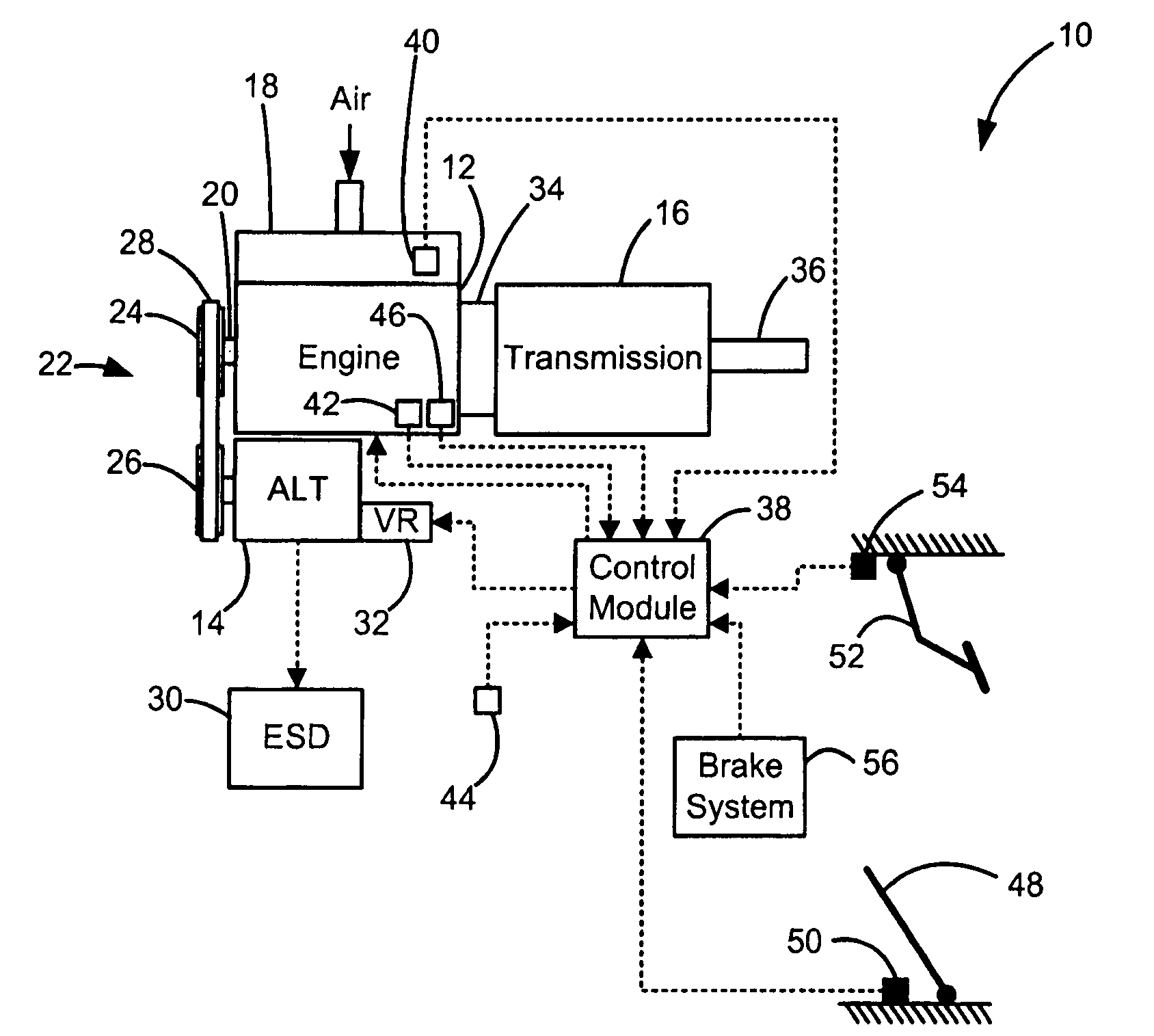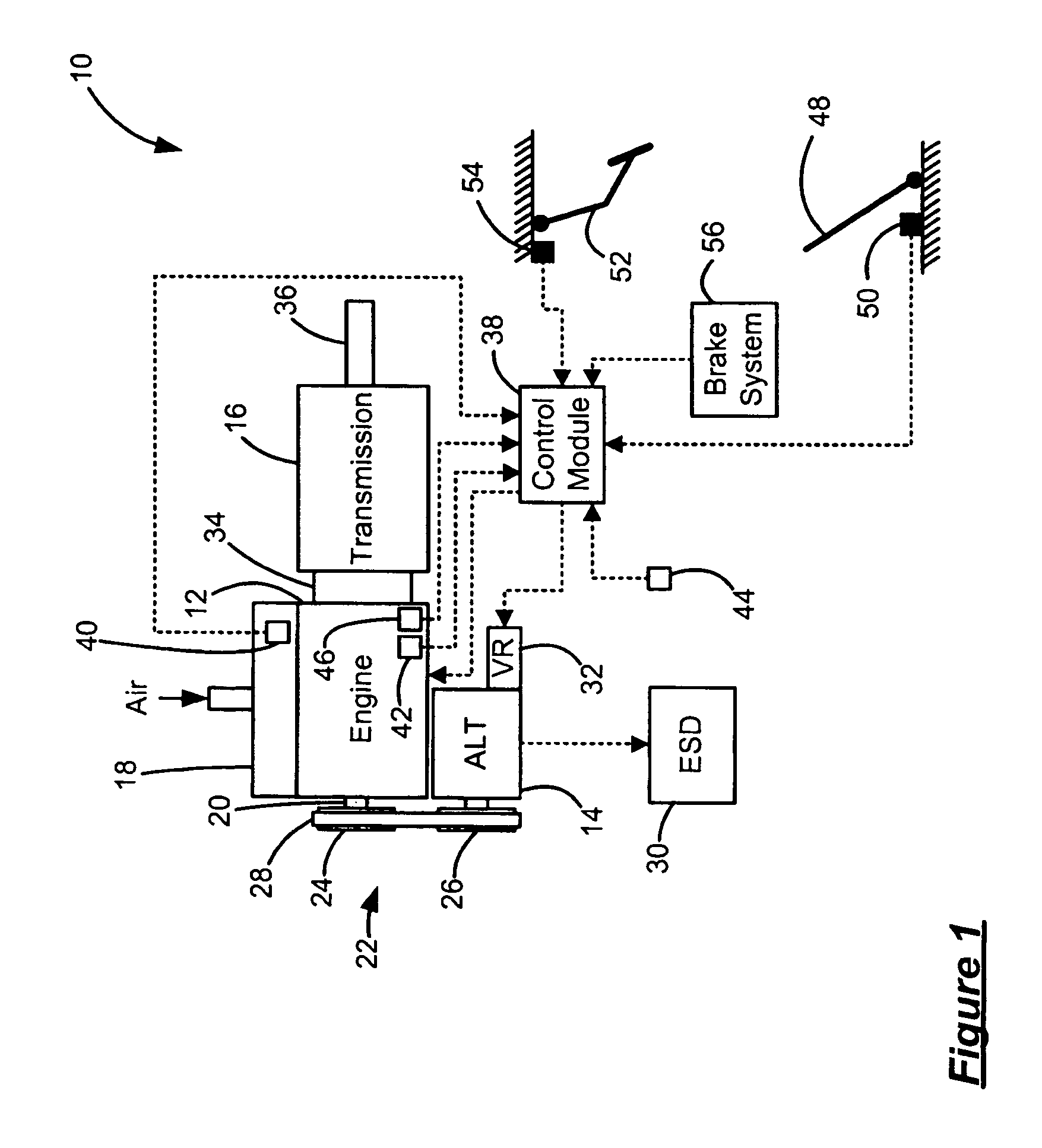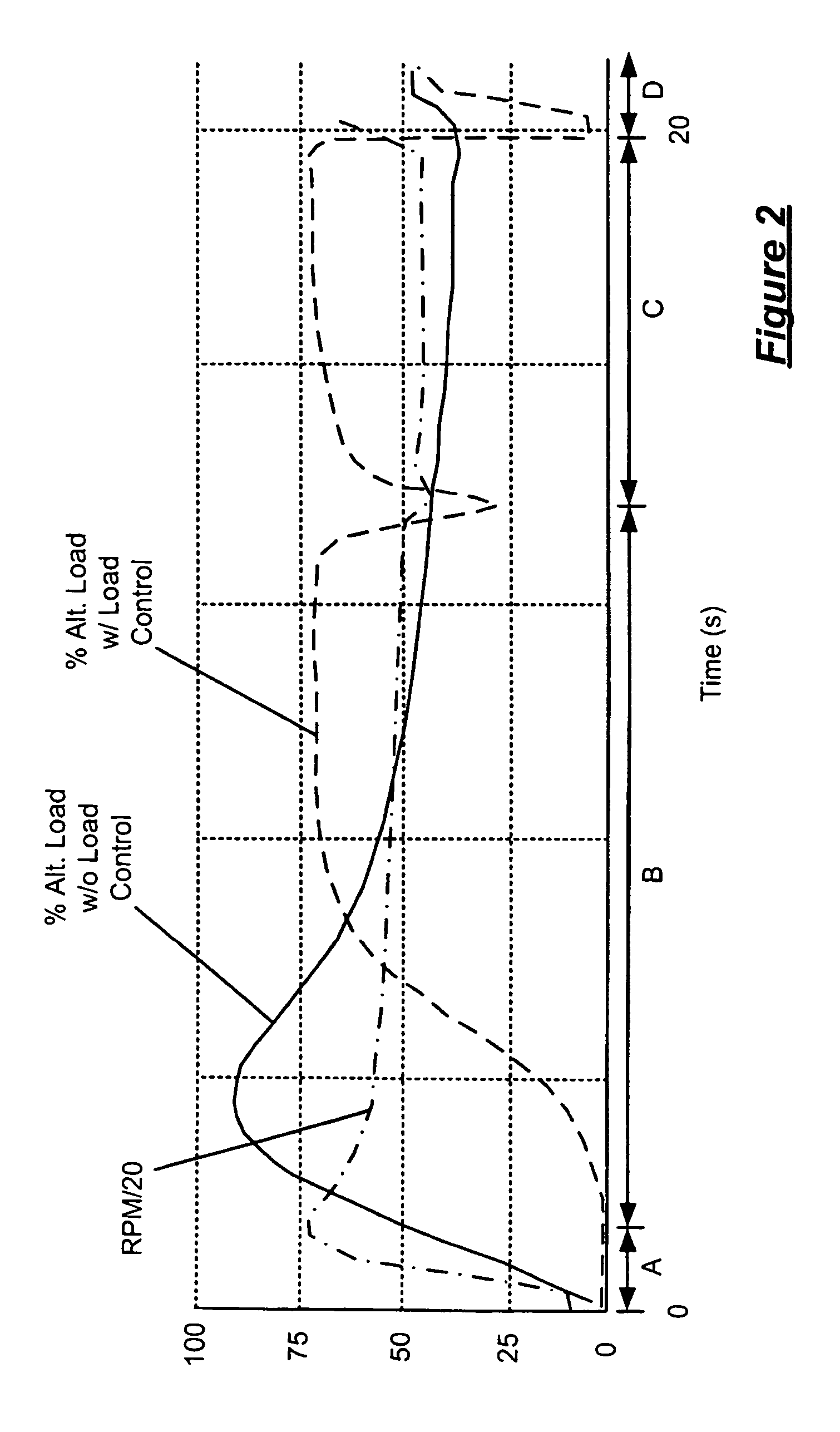Engine load control for reduced cold start emissions
a technology of engine load control and cold start, applied in the field of vehicles, can solve the problems of difficult cold start fuel and spark control, low engine efficiency, and low efficiency of catalytic converters, and achieve the effect of reducing engine emissions and alternator load
- Summary
- Abstract
- Description
- Claims
- Application Information
AI Technical Summary
Benefits of technology
Problems solved by technology
Method used
Image
Examples
Embodiment Construction
[0017]The following description of the preferred embodiment is merely exemplary in nature and is in no way intended to limit the invention, its application, or uses. For purposes of clarity, the same reference numbers will be used in the drawings to identify similar elements. As used herein, the term module refers to an application specific integrated circuit (ASIC), an electronic circuit, a processor (shared, dedicated, or group) and memory that execute one or more software or firmware programs, a combinational logic circuit, or other suitable components that provide the described functionality.
[0018]Referring now to FIG. 1, an exemplary vehicle 10 includes an engine 12, an alternator 14 and a transmission 16. The engine 12 produces drive torque to drive the alternator 14 and the transmission 16. More specifically, the engine 12 draws air into an intake manifold 18 that distributes the air to a cylinder (not shown) where it is combined with fuel to form an air / fuel mixture. The air...
PUM
 Login to View More
Login to View More Abstract
Description
Claims
Application Information
 Login to View More
Login to View More - R&D
- Intellectual Property
- Life Sciences
- Materials
- Tech Scout
- Unparalleled Data Quality
- Higher Quality Content
- 60% Fewer Hallucinations
Browse by: Latest US Patents, China's latest patents, Technical Efficacy Thesaurus, Application Domain, Technology Topic, Popular Technical Reports.
© 2025 PatSnap. All rights reserved.Legal|Privacy policy|Modern Slavery Act Transparency Statement|Sitemap|About US| Contact US: help@patsnap.com



